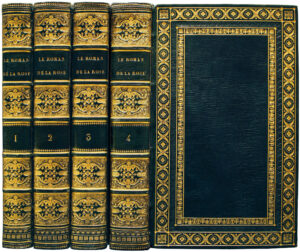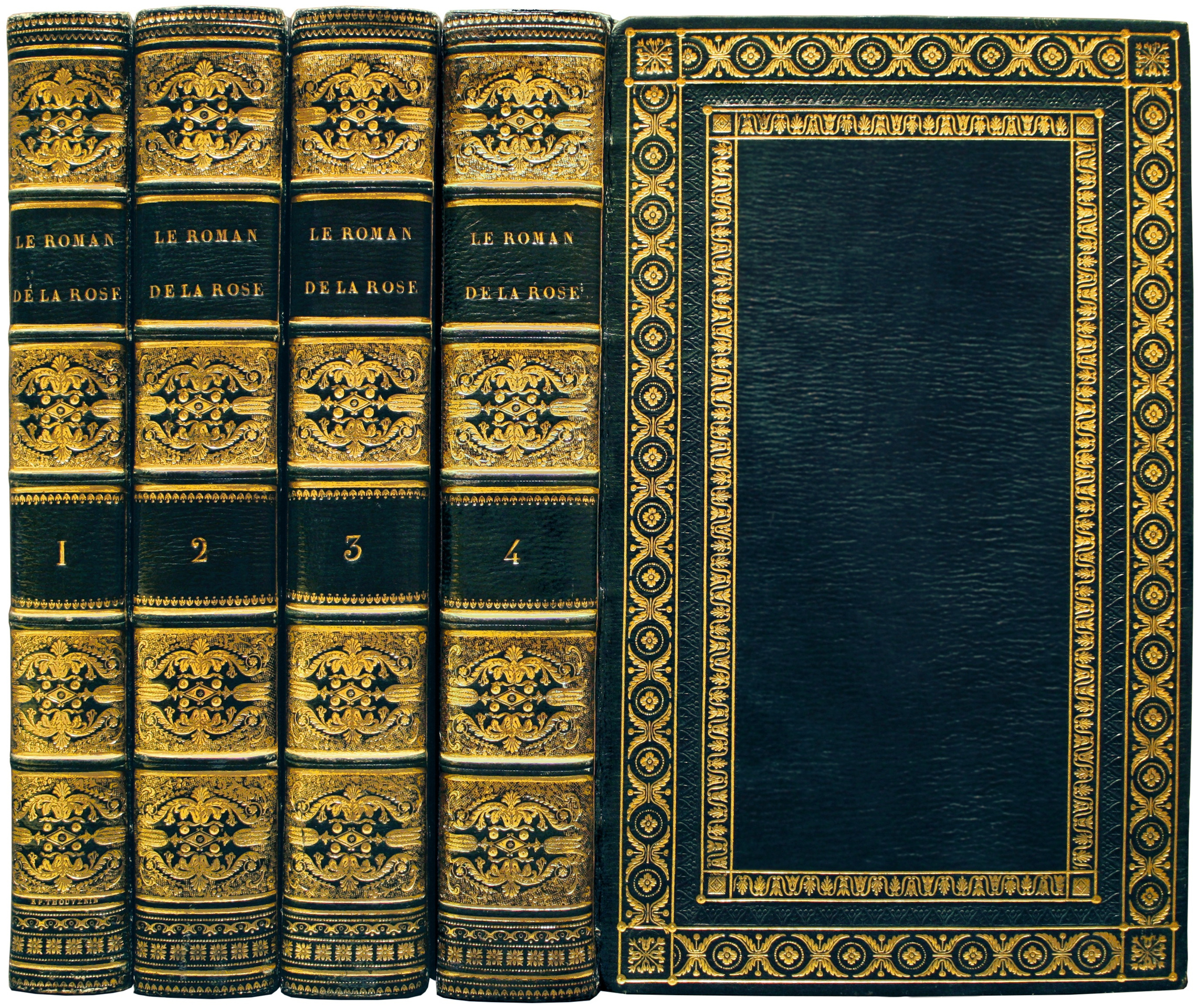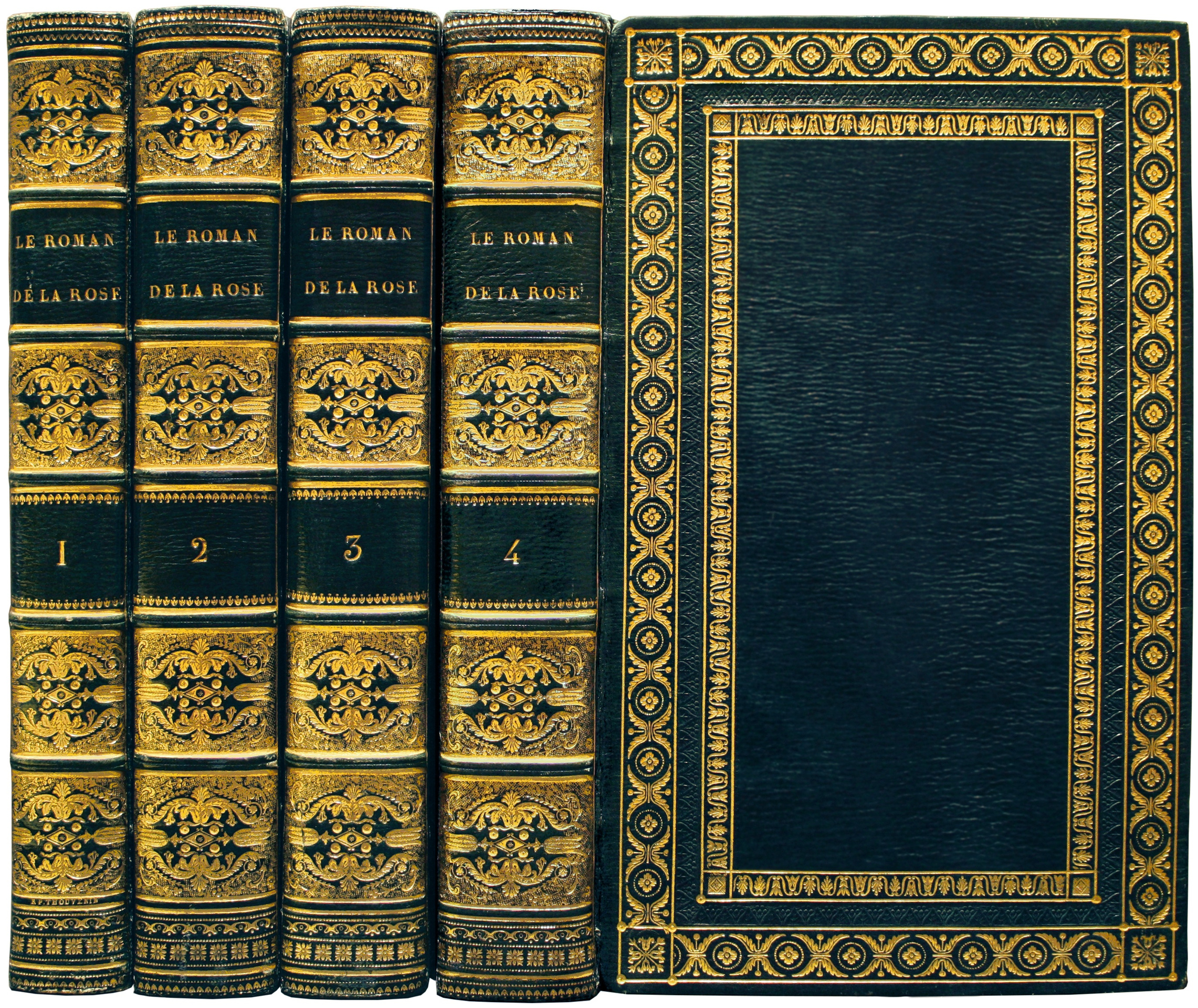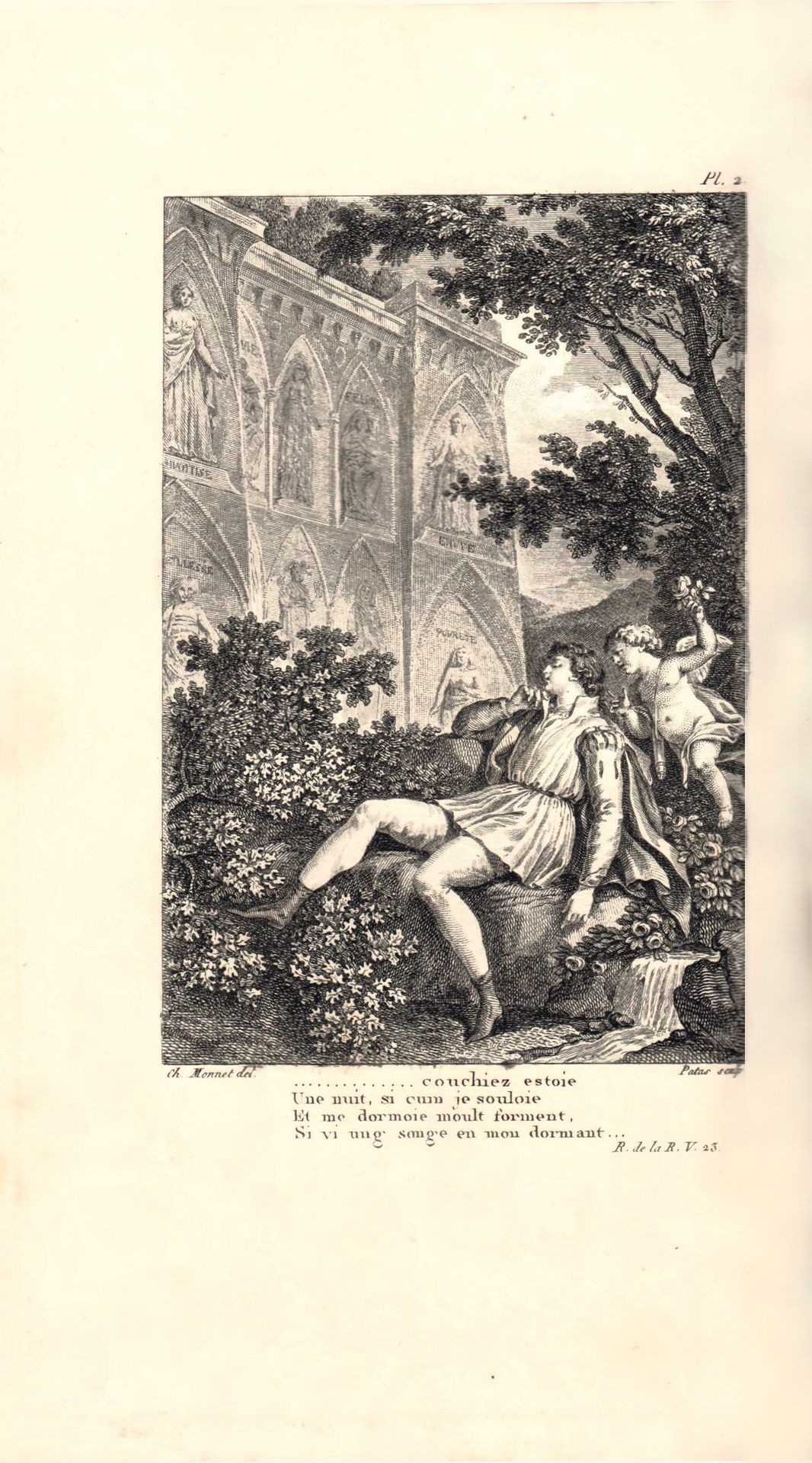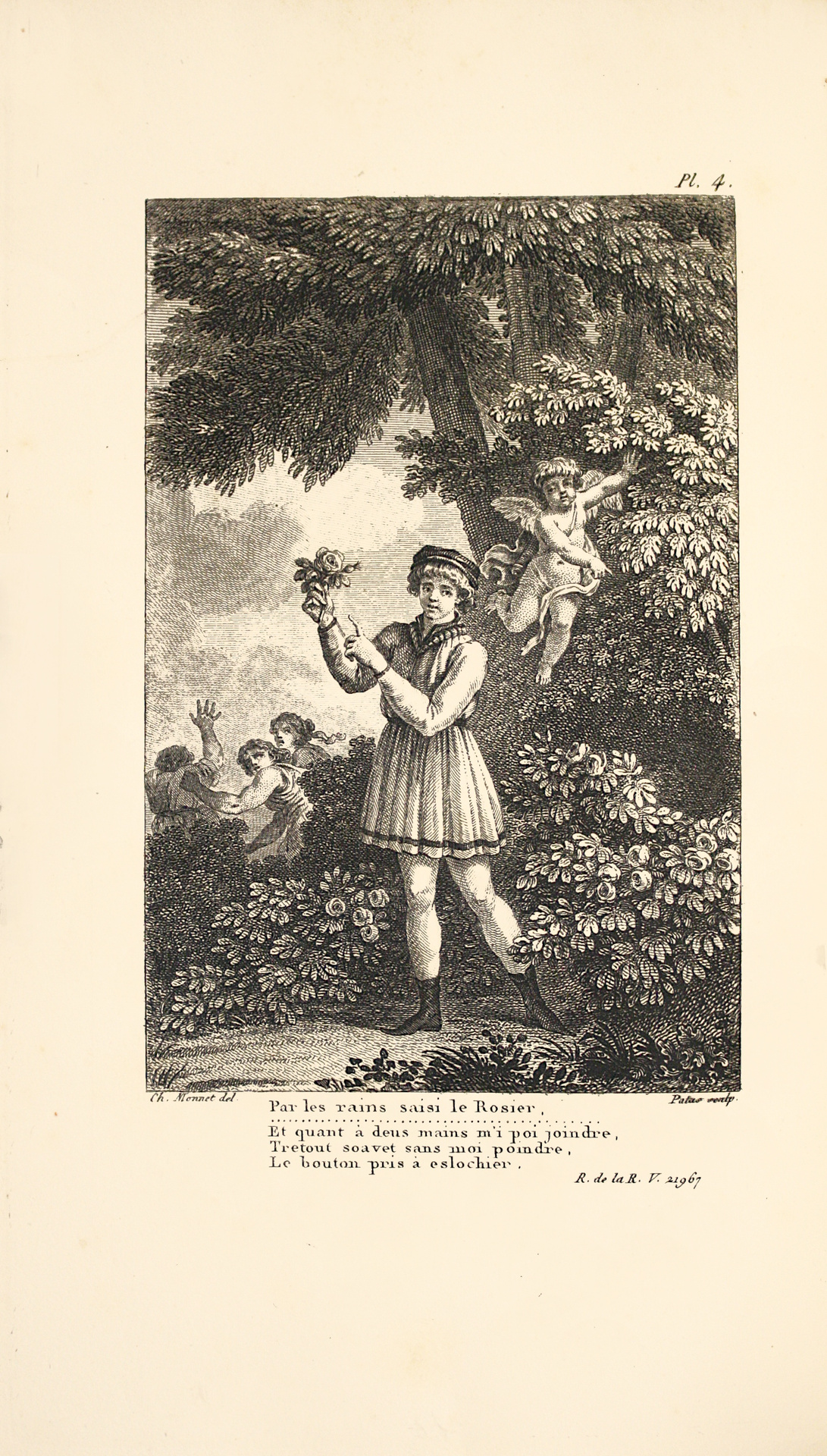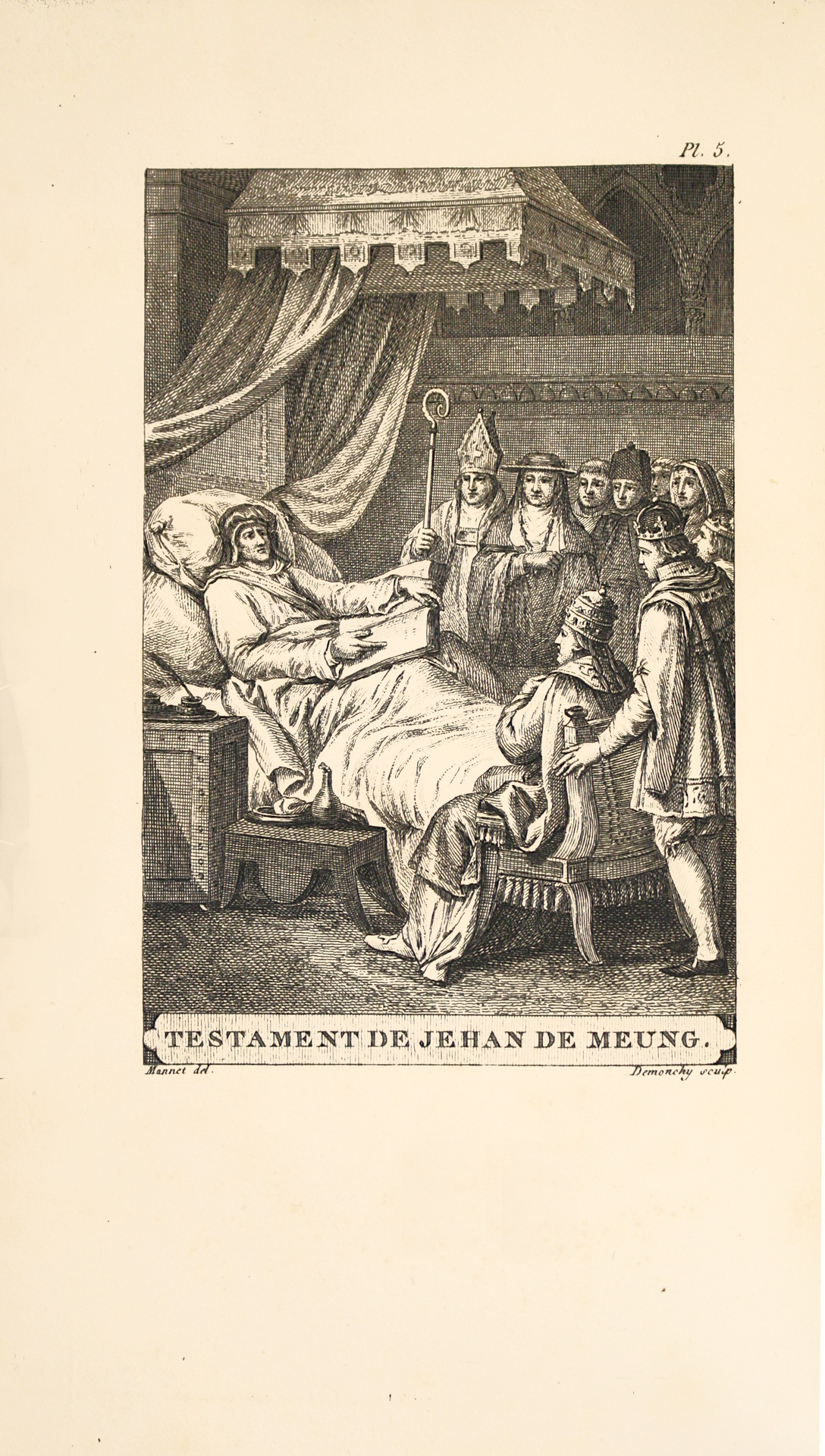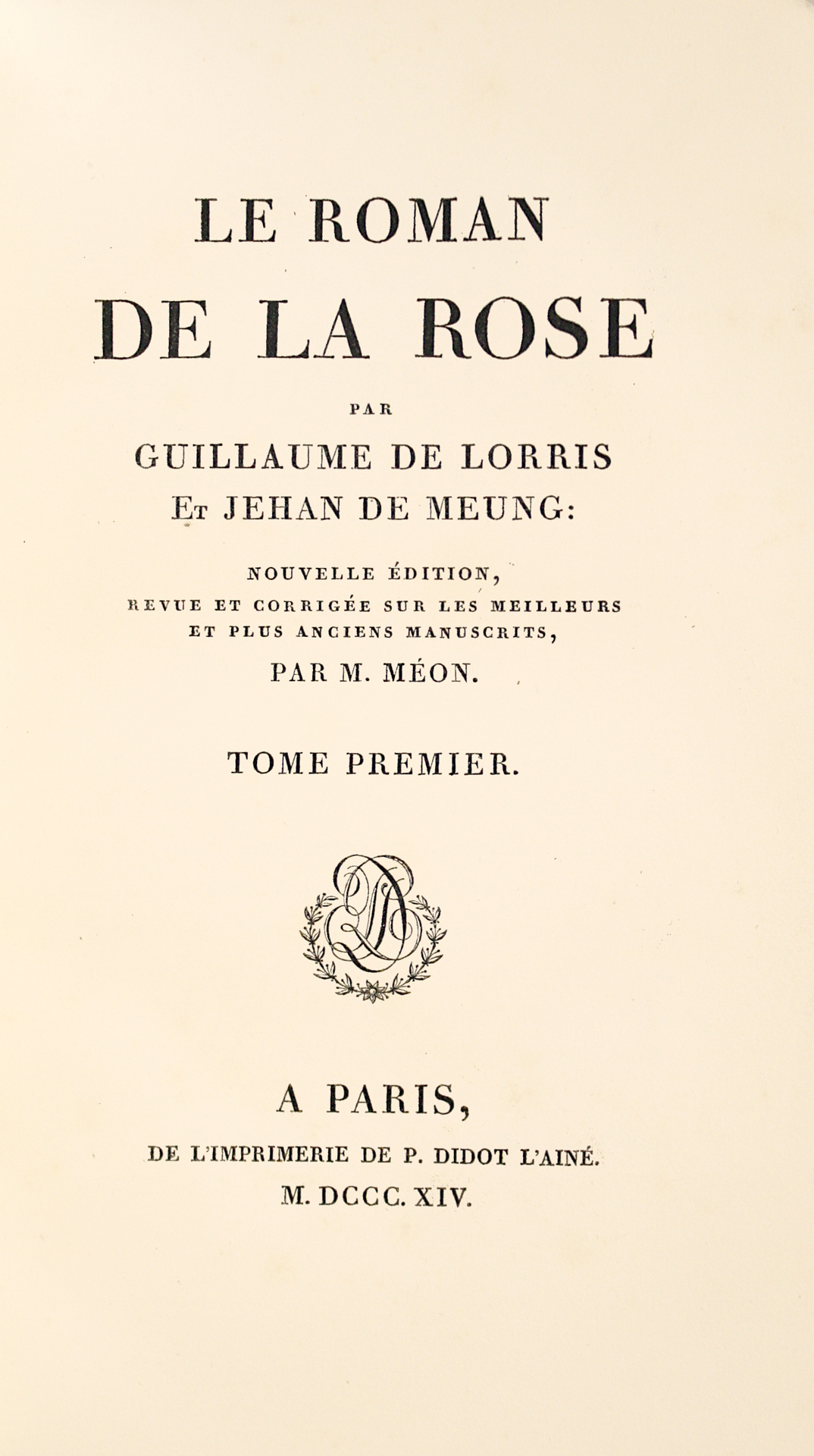Paris, Didot, 1814.
4 volumes 8vo [216 x 132 mm] of : I/ (1) bl. l., (2) ll., 1 portrait, xxiii pp., (1) bl. p., 175 pp., (1) bl. p., 1 full-page plate, 164 pp., (1) bl. l. ; II/ (1) bl. l ., (2) ll., 1 full-page plate, 460 pp., (1) bl. l. ; III/ (1) bl. l., (2) ll., 1 full-page plate, 395 pp., (1) bl. l. ; IV/ (1) bl. l., (2) ll., 1 full-page plate, 496 pp., (1) l. of errata.
Contemporary blue straight-grained morocco, richly decorated covers with diverse blind-stamped and gilt borders, richly decorated ribbed spines, gilt inner border, gilt edges. Contemporary binding signed Thouvenin.
“This edition well printed and on vellum paper, should be preferred to all the others”. (Brunet, III, 1175).
First edition given by Meon, dedicated to the count Daru, illustrated with 4 superb engravings by Monnet and a Gothic portrait of Jean de Meung by Girardet.
Bulletin Morgand an Fatout, 11334 ; Graesse, IV, p. 263.
“Which surprises every time we approach the ‘Romance of the Rose’ is that it’s a work of humanists, proceeding from two very different spirits and explaining in a remarkable way the evolution of the spirits. The poem of Guillaume de Lorris is an art of love, and if all the courteous love, which will soon disappear, expresses itself in it, it is already imbued with the Ancients, especially with Ovid; the one of Jean de Meun is an encyclopedia, where the author gathers in a noble speech all the data of science and philosophy, it is also a wide cosmological poem. Thus, each one, in his own way, reunited everything that was possible to gather on two subjects as important; but whereas Guillaume de Lorris turns to a past, which soon will no longer exist, Jean de Meun foresees the future and announces the humanist 15th century. By this, ‘The Romance of the Rose’, the most significant work of all French Middle Ages, is located at the turn that took, between these two extreme dates of composition, the French spirit; one can find, quite particularly combined, two currents of thought who are in a way two constant principles of French literature.”
Superb copy printed on vellum paper, covered with stunning contemporary bindings by the great Thouvenin, the most famous binder of the time, in richly decorated blue morocco.
See less information
